Our Story
Pat Brown
President – Pro Sound Testing, Inc.
A Little History
I was an early adopter of room acoustics modeling software, beginning with PHD (Prohs Harris Design) from John Prohs and David Harris at Ambassador College. PHD was originally a mechanical modeling system, and was later replaced by a DOS-based software. I was also an early user of Bose Modeler™. This was the 1980’s and the use of modeling software for sound system design was becoming mainstream with Altec’s AcoustaCAD™, JBL’s CADP2™, and the DOS version of EASE™. As we moved into the ’90s the support and development of manufacturer-specific programs dwindled. EASE made the leap to Microsoft Windows™ and added some acoustical simulation capabilities.
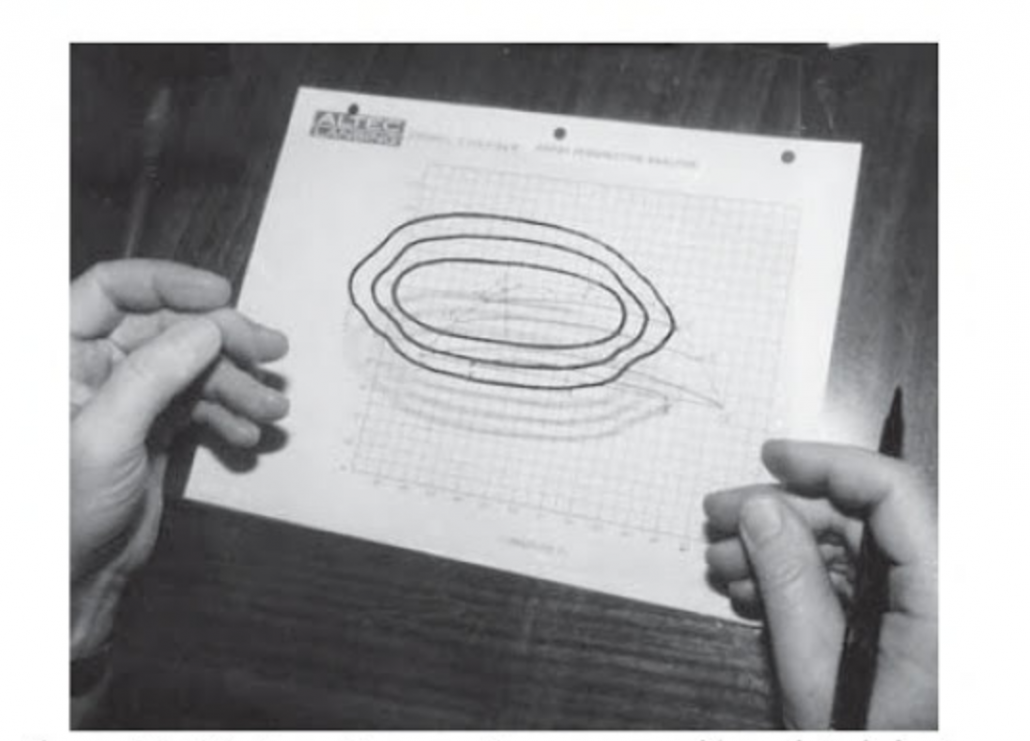
An isobar overlay from Altec Lansing (courtesy Handbook for Sound Engineers).
Also in the 1980’s development began on a software aimed at theater lighting and acoustics, that would later be adapted for use in sound system design. CATT-Acoustic™ is now in it’s 4th decade. Based on Geometric Acoustics (GA), CATT was the first to introduce a number of innovations, including the use of Dynamic Link Libraries (DLL) for array modeling, allowing near-field simulations, and making auralization usable as a design tool.
While these programs were game changers when it came to sound system design, what emerged was a confusing landscape of proprietary file formats and brand-specific programs. Manufacturers learned that modeling software development is very expensive, and that end users didn’t want a separate program for each brand. They looked to offload the task to independent developers. These programs need loudspeaker data and there was no universal format.
The need for a common file format and independent loudspeaker measurement labs was becoming apparent.
An Independent Test Lab
Pro Sound Testing, Inc. (PST) was formed in 2005 as Electro-acoustic Testing Company, Inc. (ETC). The name was changed in 2016 to be more consistent with the URL of our sibling – www.prosoundtraining.com. Training and testing go hand-in-hand, in the mid-2000’s the need for a 3rd party loudspeaker test lab became apparent, along with the need for a non-proprietary loudspeaker data file format for room modeling programs. Additional test labs popped up during the 2000’s, including NWAA Labs and Excelsior Audio in the US, and IFAA in Germany.
Ironically I did not initially set out to open a test lab. I saw the need, and tried to recruit someone to take on the task. When no one emerged I decided to give it a go. We had an existing building that could renovated. Our rural location meant that there were no traffic noise issues. Also, I’ve always been drawn to things that require learning, and since I knew nothing about spherical loudspeaker testing there was a lot to learn.
After forming PST one of the first orders of business was to begin a collaboration among acoustics software developers to establish a universal file format for loudspeaker modeling data. Unknown to myself, there was an initiative ongoing led by CATT-A author Bengt-Inge Dalenback. The work was largely done but needed refinement and exposure. PST was able to contribute in both areas.
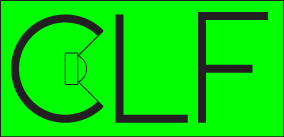
Common Loudspeaker Format (CLF)
The Common Loudspeaker Format – CLF is now supported by dozens of loudspeaker manufacturers world wide. It is the preferred format for CATT-Acoustic, Odeon, Bose Modeler, and others. Along with the GLL format (proprietary to EASE) all modeling platforms have an ample supply of loudspeaker data.
Hardware Development
The heart of a loudspeaker measurement system is the mechanical rotator required for collecting the spherical data set and the software needed to drive it. In 2005 no ready-made solutions existed for the rotator. Our first attempt using a pair of customized Outline turntables was a bust. The next iteration used a modified Genie Lift and stepper motors, necessary to provide sufficient torque for testing sound reinforcement loudspeakers with an offset center-of-gravity. This was better, but not good enough. Aluminum bends too easily and loudspeakers must be measured with precision. We learned the hard way that load ratings for turntables and stepper motors assume a center-
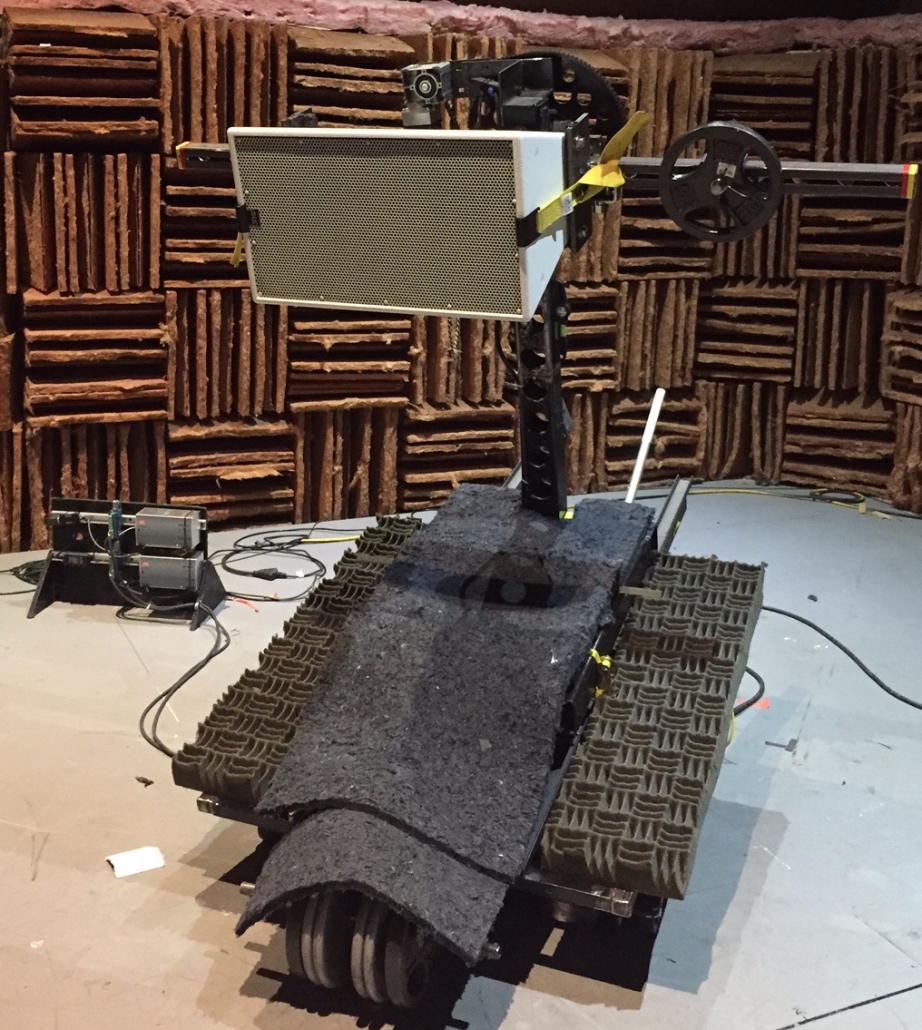
Our Custom Designed Rotator
of-gravity that is centered on the turntable, which is hardly ever possible.
The third try was a completely new design that is still in service today. It remains unrivaled in its load capacity, achieved by a combination of load balancing, worm gears, and chain drive. Our measurement system is built around the Monkey Forest™ measurement program, written by Swen Muller and customized for our application (we are on version 21!). I was introduced to MF during a factory tour at Renkus-Heinz in the 1990’s, who used the software to drive their proprietary loudspeaker rotator – a truly impressive device. MF remains unrivaled in its capabilities for producing loudspeaker balloon data.
The Test Chamber
The measurement environment was also a major challenge. We determined early-on that a small anechoic chamber is not an optimal place to collect spherical data for large, heavy sound reinforcement loudspeakers and small arrays. We needed a large (8 m) measurement distance, plus the ability to use lifts, jacks, a chain hoist, etc. The solution was a hemi-anechoic environment rendered anechoic through the use of a time windowed measurement. This required a large number of anechoic wedges for the soft surfaces, and multiples layers of MDF board sandwiched with mass-loaded vinyl for the hard surfaces. We learned that forced-air HVAC causes phase shift (well, we already knew that. We just didn’t know how much it would matter). The solution was to double-insulate the room to maintain the temperature for the length of a test session.
Perhaps the most innovative aspect of our testing room is the tri-hedral boundary microphone built into the room corner (it actually IS the room corner). Constructed from multiple layers of MDF board and mass-loaded vinyl, a DPA omni microphone at the origin is compensated to match a free-field reference mic to a fraction of a dB. Our tri-hedral microphone has been implemented by several manufacturers and independent test labs (with our assistance). It took nearly a year after the rotator completion to refine the room through a process of measure/modify until it was right.
Half-space measurements were originally accomplished by mounting a large boundary on the whole space rotator. This was soon replaced with a large, rigid boundary with movable microphone, which worked much better but did not go low enough in frequency. That limitation can be worked around with near-field splicing techniques, but these take a lot of time. What we really needed was a true half-space measurement system that could go very low in frequency. I thought about this for several years before actually doing it. The whole-space rotator is on wheels, so it can be rolled out of the way, leaving a large, exposed floor area. This would be ideal for an in-boundary cavity for flush-mounting loudspeakers. The floor was jack-hammered and a stainless steel cavity installed. A LinearX turntable was modified to rotate the flush-mounted baffle, and a 19-mic array was purpose-built (2 m radius) to collect the data.
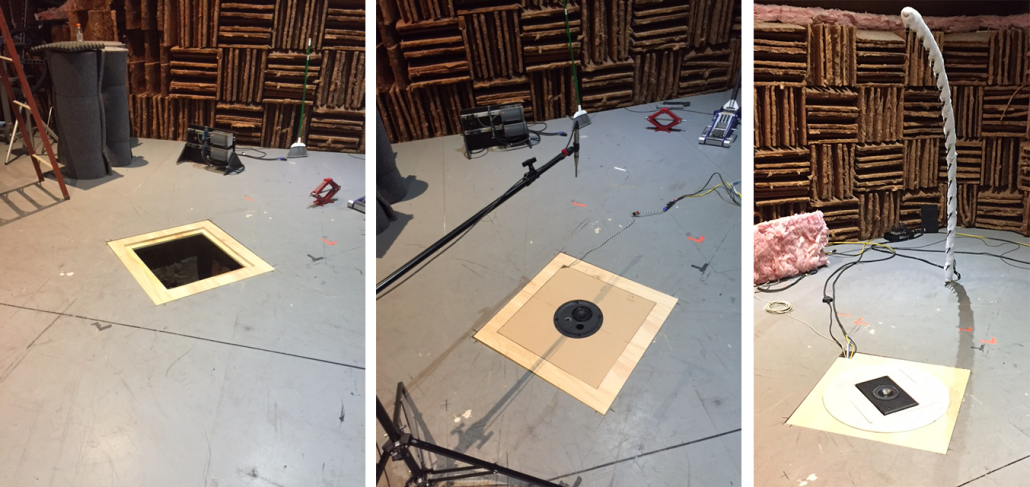
In-boundary measurements can use a single microphone or an array.
Amplifier Testing
After testing hundreds of loudspeakers from multiple manufacturers, one becomes
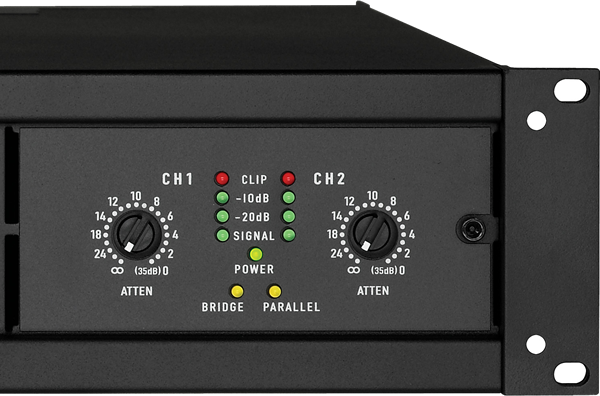
tuned in to the behavior of power amps and their sensitivities to various loading conditions. As an industry, we have been thoroughly indoctrinated to “power” ratings for decades, so much so that an improper mindset toward amplifier performance and specifications has emerged. This “more power is better” mentality is an obstacle to understanding the role of the amplifier and the philosophy that should drive its design and selection. The amplifier and loudspeaker, along with signal processing form a system. It does no good to maintain the signal integrity through the mixer and DSP, only to compromise it by selecting an inappropriate under or over-rated amplifier. In short, the amplifier, assumed to be the simplest component in the signal chain has become the weak link. It’s my opinion that much of the distortion heard in modern systems is from the amplifier and failure to consider how it behaves under load. The issue is so critical that we have developed a website specifically to address it.
Room Modeling Software
Loudspeaker data is of little use without simulation software. Of the multiple prediction platforms born late last century, only a handful remain. PST has a close working relationship with CATT-Acoustic, a premiere acoustics modeling platform. CATT author, Bengt-Inge Dalenback has been unwittingly influential in the development of our testing methods to help assure that the data is appropriate for the algorithms and assumptions used in geometric acoustics simulations. The intuitive “more resolution is better” approach to loudspeaker data is actually a detriment to the room modeling process. The resolution must be appropriate, and that has been the guiding philosophy for the CLF.
We fully support proprietary loudspeaker data formats such as EASE GLL (we produce many GLL files). A platform-independent format makes loudspeaker data available to more software developers, and encourages research and development. Both CLF and CATT enjoy widespread use at the university level. All PST measurement projects provide both GLL and CLF data. A single format allows no comparisons or error-checking – processes that are vital to data integrity and forming a philosophy with regard to data accuracy.
Influence on Training Programs
What we have learned from testing loudspeakers has supported the development of both on-line and in-person audio and acoustic training programs, delivered by Synergetic Audio Concepts, Inc. (SynAudCon). Attendees of the Sound System Design seminar get a unique look at acoustics room modeling as seen from the perspective of real-world loudspeaker/amplifier specifications. SynAudCon has been heavily involved in sound system and room acoustics testing for decades. These disciplines merged nicely when developing the training programs.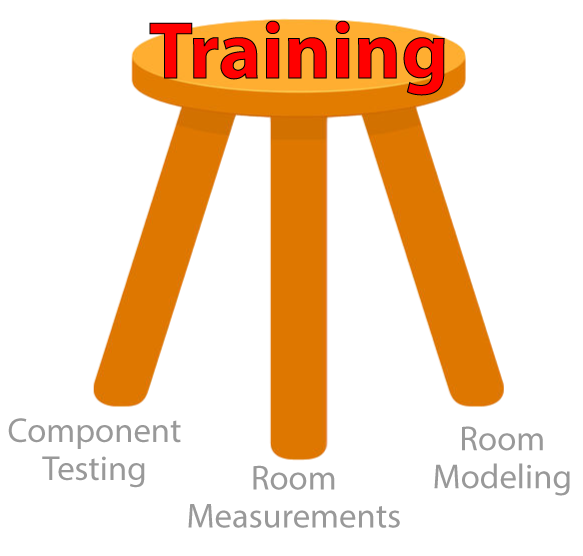
The journey through the development of a measurement facility inspired us to develop an equally innovative and practical approach to testing audio power amplifiers. The audio industry has been plagued by ambiguous technical specifications for decades. The problem has not been the lack of Standards, but in the presentation of the data in a way that allows meaningful comparisons between makes and models along with proper amplifier selection based on the loudspeaker’s properties. The result was the Common Amplifier Format (CAF). The freeware CAFViewer app serves as a teaching tool in all SynAudCon trainings.
Conclusion
Pro Sound Testing is committed to maintaining accuracy and integrity in loudspeaker and amplifier specifications. Part of this is assuring that acoustics modeling is better understood by its users, including its shortcomings. Audio is an engineering field with some artistic components. It is our philosophy that good engineering enables the art, and that unguided intuition can get in the way. The best sound system designer is a human whose intuition has been trained and guided by good engineering principles. pb
